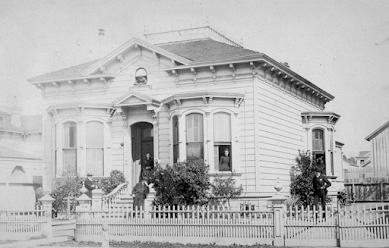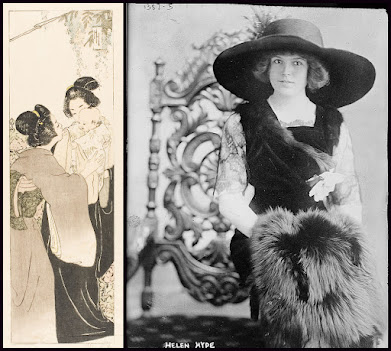 |
| Grave marker of Natasha Borovsky |
Natasha Borovsky (born Nataliya Alexandrovna Borovskaya) was a Russian-American poet and novelist. She is best known for her two sweeping historical novels, A Daughter of the Nobility (1985) and Lost Heritage (1995), which explore the upheavals of 20th-century Europe. Borovsky’s work often centers on the shattering effects of war on aristocratic families and the decline of the old European nobility. Her writing, informed by her own émigré background, also touches on themes of exile and cultural identity as experienced by displaced European elites.
Borovsky was born in Paris to a family of distinguished heritage. Her father was Alexander Borovsky, a renowned Russian concert pianist, and her mother, Maria Sila-Nowicki, was of Polish and Russian noble descent. As a child, Natasha spent summers and winters at her maternal family’s estate near Kazimierz Dolny in Poland, while also attending schools in Germany, Switzerland, and France. In 1940, at the outset of World War II, the advance of Nazi Germany forced the family to flee France. Borovsky emigrated with her mother to the United States, seeking safety from the war’s destruction. Settling in New York, she pursued higher education at Sarah Lawrence College for two years. Thanks to her extraordinary gift for languages (she was fluent in multiple European tongues), Borovsky was hired during the war as a translator for the CBS “Listening Post,” where she transcribed and translated wartime broadcasts from around the world. She later worked for the U.S. Office of War Information in New York City and for the Hoover Institution’s library in postwar Paris, roles that deepened her engagement with historical research. Borovsky eventually settled in California; she married Stuart Dodds, an editor at the San Francisco Chronicle, and made her home in Berkeley.
Originally published in 1985, A Daughter of the Nobility is Borovsky’s most acclaimed novel. It is an epic historical saga that follows the life of Tatyana Silomirskaya, a young Russian aristocrat (and goddaughter of Tsar Nicholas II) who witnesses the cataclysmic events that transform Russia in the early 20th century. Through Tatyana’s privileged yet tumultuous vantage point, the novel spans major upheavals from the Russo-Japanese War and the 1905 Revolution to World War I, the fall of the Romanov dynasty in 1917, and the subsequent turmoil of civil war. Borovsky drew heavily on her own family’s imperial Russian background to imbue the narrative with rich historical detail and authenticity. Reviewers praised the panoramic scope and historical accuracy of the novel, although some criticized the characterization as melodramatic or stereotypical.
Upon release, A Daughter of the Nobility enjoyed international success. It was translated into ten languages, including Russian and Polish, and became a best-seller in several countries. The novel’s broad appeal stemmed from its vivid depiction of a bygone aristocratic world swept away by war and revolution, as well as its dramatic personal story of love and loss amid historical chaos. In 1986 Borovsky received an American Book Award for this work, recognizing it as a notable contribution to American literature by an immigrant author. Decades later, A Daughter of the Nobility remains the author’s signature achievement and a significant entry in the genre of historical fiction about Imperial Russia.
Borovsky’s second novel, Lost Heritage, was published in 1995 as a continuation of the grand historical tapestry she began in her first book. Although not a direct sequel in terms of characters, Lost Heritage completes the saga by carrying the story of Europe’s aristocratic families into the mid-20th century. This expansive novel opens during the Russian Revolution of 1917 and concludes around the time of the Yalta Conference of 1945, thus encompassing the World War II era and its profound impact on European society. Borovsky herself described Lost Heritage as a stand-alone work that could be read independently, yet it clearly echoes the themes of its predecessor. The novel is notable for its unrivaled historical detail – Borovsky, determined to preserve the full scope of her vision, chose to publish it through her own imprint (Sila-Nova Press) rather than abridge the content to suit a commercial publisher. Lost Heritage revisits the decline of Europe’s old nobility under the pressures of war, totalitarianism, and exile, reflecting events that occurred within Borovsky’s own lifetime. While Lost Heritage did not attain the same level of popular renown as her first novel, it stands as an ambitious work of considerable depth and research, rounding out Borovsky’s contribution to historical fiction.
In addition to her novels, Natasha Borovsky had a distinguished career as a poet. She wrote poetry throughout her life, often exploring philosophical and spiritual themes, and her verse was widely published in literary journals. Borovsky released several poetry collections that showcased her versatility and multicultural perspective. Her early collection Drops of Glass (1981) introduced readers to her poetic voice. This was followed over a decade later by Desert Spring (1993), a volume of poems accompanied by sketches by her daughter, artist Malou Dodds. In the mid-1990s she published Grasp the Subtle Lifeline, a collection of spiritual poems also illustrated by her daughter Malou. Borovsky’s poetry, like her fiction, often grapples with themes of dislocation, memory, and faith, reflecting the sensibilities of an exile straddling different cultures. She remained active in the literary community, giving poetry readings and lectures in her later years.
Natasha Borovsky is remembered for her unique literary contributions that bridge continents and eras. Her writing earned formal recognition, most notably the 1986 American Book Award for A Daughter of the Nobility, honoring the novel’s achievement in capturing a diverse cultural experience. Throughout her career she received praise for preserving the history and heritage of European aristocracy through compelling narrative. Borovsky’s novels and poems serve as a chronicle of exile – by portraying noble families uprooted by war and revolution, she illuminated the human cost of political upheaval on those who lost their homeland and social position. As a Russian-born author who adopted the United States as her home, Borovsky brought an émigré’s insight into questions of cultural identity and belonging. Her works highlight the tension between the opulent world of pre-revolutionary Europe and the stark realities of the 20th century, often through the lens of characters who must reconcile their aristocratic upbringing with the demands of a changed world. This focus on the fate of displaced aristocrats, combined with her meticulous historical research, has made Borovsky’s literature a valuable source of understanding the personal side of history’s great upheavals.






































